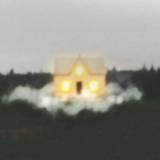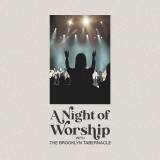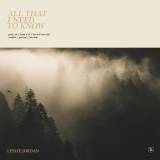10 Tips for Worship Leaders

Once again I want to be clear that these are not "rules". All Spirit-filled Praise and Worship has to be Spirit-led and rules prevent the Spirit from blowing where He wills. But there are certain good practices that will enable the Spirit to blow effectively, and the accompanying reasons provided for these "good practices" will help us understand why.
1. Make your own worship songbook
Some people use computers, some notebooks, but an effective worship leader keeps a copy of at least the titles and keys of the songs the church has used in worship. This is an invaluable tool. It should be organized by keys, function, subject, etc. and it should be easy to update. Source books and page numbers should be noted so that music can be quickly found.
2. Devise your own technique for teaching new songs to the church.
Here is mine:
Step One: Teach the singers and players first. (Sight-reading is not a pleasant experience in front of the whole church.)
Step Two: Sandwich the song between two familiar songs.(Be sure to provide words for congregation.)
Step Three: Use the song again soon. (Learning must be re-enforced)
Other new song introduction techniques include using a new song to open the service or letting the singers do it first as a special. Don't try to teach too many songs in one service.
Other new song introduction techniques include using a new song to open the service or letting the singers do it first as a special. Don't try to teach too many songs in one service.
3. Song Selection
Provide the direction to all improvising musicians and to all singers. It is important that everybody sings and plays the same version of the songs the worship leader has selected. I consider the published version of the song to be the definitive version. Local "improvements" on the harmony or melody should rarely be used. Respect the songwriters. There has to be a standard, some way to settle on how a song should be played. I strongly suggest using the published version. This is objective and does not favor any local personality. If orchestra is being used, the rhythm chart becomes definitive. You should not expect to change orchestrations to match the chords that local keyboardists want to play. When orchestrations are being played, everyone is in subjection to the score.
ALSO SEE: SONG SELECTION - A GUIDE FOR WORSHIP LEADERS
ALSO SEE: SONG SELECTION - A GUIDE FOR WORSHIP LEADERS
4. Use the songs in their published keys.
Lead sheets are the life line of a worship ministry but asking musicians to transpose is not generally well received. Songs should be pitched for the congregation, not for the comfort of the worship leader or musicians. Publishers usually place the song in an average range, not too high and not too low. If you place a song too far away from its published key you will make the congregation uncomfortable. That is never helpful when you want them to sing.
There are altos and basses who lead worship. Songs are usually published for the 2nd tenor/2nd soprano range. This means that these worship leaders must lower some songs slightly in order to sing them. To do that without losing the congregation, lower the song 1 half-step or at most 1 whole step. Transpositions down a minor 3rd will take many songs out of the average voice range. If half-step-down modulations get into difficult keys, (C down to B, F to E, etc.) a whole step must be used. Congregations can handle things down a little, but not more than a 3rd. If the song is still too high for the worship leader he or she must learn to depend on the higher voices in the worship team for a phrase or two. It is much better for the worship leader to be uncomfortable for a few notes than to place the song out of reach of the people he or she is trying to lead in worship.
5. Learn how to warm-up your worship team.
It is so important to help your leaders focus on the business at hand. Adequate pre-service time should be allotted to learn or touch up any new music, and to teach any transitions, introductions, endings, etc. After all that is done, find a private place and pray together. Review the goals of the service, and the music you have planned. Help them settle in mentally and spiritually so they can help you execute the plan God has given you. The last few minutes before the service should not be spend in a frantic search for leadsheets or transparencies, or in last minute rehearsal. These moments should be reserved for spiritual preparation.
10 Tips for Worship Leaders
 Reviewed by Admin
on
6:09:00 PM
Rating:
Reviewed by Admin
on
6:09:00 PM
Rating:
 Reviewed by Admin
on
6:09:00 PM
Rating:
Reviewed by Admin
on
6:09:00 PM
Rating:
















Post a Comment